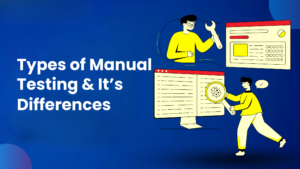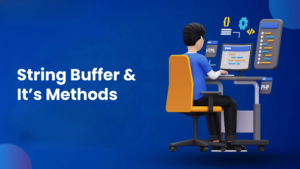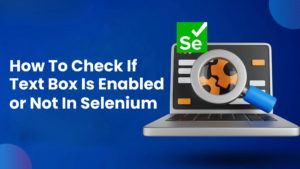

Manual testing interview questions for experienced
Any bug that is getting leaked into the production from the testing environment is called bug leakage.it happens unitentionally
Bug leakage will happen due to some reason.
- If the review process is not done.
- If requirement is not clear to the tester
- IF test coverage is not proper.
- If a code merging issue happens
- If the testing environment is not similar to the production environment.
We do verification first then we do validation.Verification ensures that the product meets the requirements from the client perspective whereas validation ensures to meet the end users need . Verification involves the testing process like test case review,inspection and walkthrough. Validation involves the testing process like component testing,integration testing and system testing.
Scrum is the set of rules and regulations we should follow in agile methodology. Scrum describes a set of meetings, tools and roles for efficient project delivery. It is a management framework that teams use to self organise and work on a common goal.
| Static testing | Dynamic testing |
| We do static testing before getting the build. | We do dynamic testing after getting the build. |
| This is the review of CRS,SRS,HLD,LLD,Review process and test plan. | System testing, component testing, integration testing and smoke testing are dynamic testing. |
| Static testing will be done first. | Dynamic testing will be done by later. |
| Cost of fixing bugs is less in static testing. | Cost of fixing bugs is more in dynamic testing. |
| Static testing is done in the verification process. | Dynamic testing is done in the validation process. |
| Static testing is to avoid the bugs that may arise at the later stage. | Dynamic testing is done to find out the number of bugs. |
Validation- Testing the functionality of an application by executing the test cases is called validation. It is done by the tester.
Verification- Verifying CRS,SRS,HLD,LLD as per the requirement is called as verification. It is done by a developer.
In the test case review process , the reviewer opens the test case based on the requirement and checks the correctness of the test cases, proper flow and maximum test coverage. But if we don’t go for the review process , we miss out some scenarios, accuracy won’t be there .
How well the app recovers from any disaster is called recovery testing.
Testing the application and comparing functionality on different hardware and software over multiple browsers, devices and multiple platforms along with multiple operating systems is called compatibility testing.
when there is less time will be testing the high severity and high priority bugs fix. We can do system testing or smoke testing on the basis of our need.
Due to human errors and mistakes made in designing the program and writing the source code software bugs arise. Sometimes miscommunication between stakeholders,development and testing teams bugs arise. Due to less experience and less time period also arise bugs in software.
One bug hiding another bug is called bug masking.
Intentionally adding the bugs to the application is called error seeding.
The challenges I faced in my software testing career are:
- Understanding the requirements was taking a long time.
- Finishing the tasks within the current sprint.
- Explaining the bugs to developers.
- Assignment of Bug Severity and Bug Priority
It is a step by step procedure to test an application. Once a new feature is added in any application we 1st understand requirement after that we prepare test plan,identify test scenarios, document the scenarios,preparing test cases, sending it for review process,after receiving review comments fix the review comments, once test case approval is done storing it into any repository, preparing traceability matrix, do the test case excution, if expected behaviour is not equal to actual behaviour we got bug that we raise it into defect tracking tool, after that we prepare test case report.at the end of the sprint, sprint retrospective meeting is conducted by scrummaster.
It totally depends on the requirement.
It concerns the functionality of an application.it depends on the customer’s requirement specification. Functional testing is mandatory to be done.
Example- component testing, integration testing, system testing, acceptance testing, beta testing API testing, smoke testing, regression testing, retesting.
It concerns the speed, load, stability,response time, recovery, security of an application. Nonfunctional testing is optional in few company.it totally based on the customers expectation.
if we execute the same set up of test scenarios and test cases for a longer period of time we will not be able to cover 100% test coverage and also not able to catch multiple bugs. That’s why we will keep updating our test cases which increase our test case coverage.
If expected behaviour is not equal to actual behaviour we got bug.when we raise a bug at that time the status of a bug is open or new.it assign to developer and developer fix the bug, once after bug is fix tester do retesting, if the bug is really fix tester has close the bug. If the bug is not really fixed, testers have to reopen the bug and assign it to the developer and the cycle will keep repeating until and unless the bug will be in the close status.
Severity- Impact of the bug on the customers business work flow is called severity.
Priority- It is the order in which the developer should resolve a defect.
There are following advantages to having a prototype model that coustmers will get to see the software at the early stages itself.High customer expectation. customers have the idea how the software looks like in future, chances of rejecting the application is negligible.
EPIC – it is a big requirement also large bodies of work that can be broken into a number of smaller tasks called stories.
Stories- it is also called “user stories” ,are short requirements or requests written from the perspective of the end user.
It is one type of nonfunctional testing. Testing the user friendlyness of an application is called usability testing.
Our application is user friendly that depends on some factors like proper navigation,proper error messages, application is available in multiple languages, easy language usages, also helps in guiding in new features.
One defect triggers another defect is called defect cascading.
Example- suppose we order some product. Is there any calculation mistake present that will impact seller account , costumer’s account.
Test case design techniques help us to create more test scenarios.
Boundary value analysis-In this test case design technique, believed that the boundaries means the extreme end can cause more error. Valid and invalid boundary values which can give proper coverage.
Equivalence Partitioning-To reduce the total number of test cases from a finite set of numbers we use this test case design techniques.
Before writing test cases we should follow the below points
- We should follow the proper test case template.
- We should write positive scenarios first then after negative scenarios.
- Test scenarios should follow the expected behaviour.
- We should write test cases and test scenarios by applying test case design techniques.
- We should write all the points in steps to reproduce the process.
- We should write in easy language.
Following all essentials qualities that a good tester should posses
- Excellent communication
- Must have all the skills like automation, test case design, test management and defect tracking
- Quick and continuous learning
- Creativity
- Think from user perspective
- Never promise 100% test coverage.
If there is no requirement present then we should do exploratory testing. We use the application first to understand the requirement. From there we will write all possible test scenarios and test cases and then will test the application based on test scenarios and test cases.
By exploring the manual testing interview questions for experienced individuals, you have gained valuable insights and guidance that can help you excel in your next job interview. These questions have provided you with a deeper understanding of the key concepts and skills required in manual testing, allowing you to showcase your expertise and stand out from other candidates. Remember to prepare thoroughly and confidently articulate your experiences and knowledge during the interview process. Good luck on your journey to securing your dream job!
Explore our Manual Software Testing Course to set yourself up for success in the field of manual testing and land a successful career by learning with industry experts and getting a chance to work on real-time live industry projects.
Consult Us


















